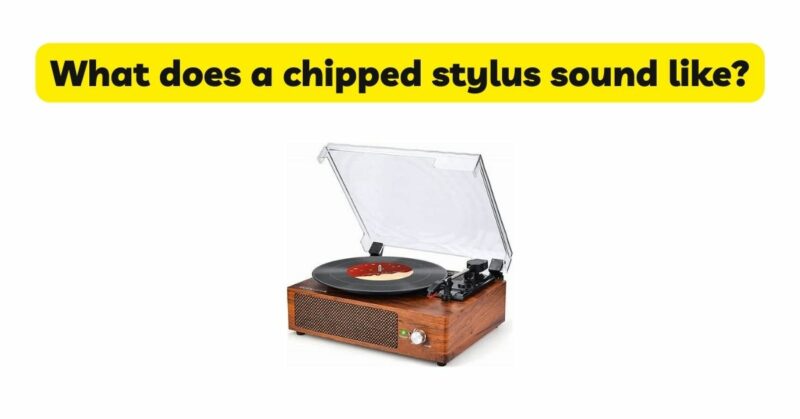In the realm of audio and music enthusiasts, the stylus is an integral part of the vinyl record playback process. This delicate component, often referred to as a needle, is responsible for tracing the grooves of vinyl records and translating the analog information into audible sounds. However, like any mechanical element, the stylus is susceptible to wear and damage over time. One common issue that arises is a chipped stylus, which can significantly impact the quality of sound produced. In this article, we will explore the phenomenon of a chipped stylus, the factors that contribute to its occurrence, and how it affects the audio playback, revealing the unique sound signature it imparts.
- Understanding the Stylus
To comprehend the effects of a chipped stylus, we must first understand the stylus’s anatomy and its interaction with the vinyl record. The stylus typically consists of a diamond or other hard material tip mounted at the end of a cantilever. The cantilever transfers the vibrations from the stylus tip to the cartridge, which then converts them into electrical signals for amplification.
- The Importance of Stylus Condition
The condition of the stylus is paramount in the playback process. A well-maintained and correctly aligned stylus ensures accurate tracking of the grooves, resulting in faithful audio reproduction. Conversely, any damage to the stylus, such as chipping or wearing, can introduce distortion and unwanted artifacts to the sound.
- Causes of Stylus Chipping
Several factors contribute to stylus chipping, including improper handling, mishandling, or accidental impact. Additionally, an aging stylus is more susceptible to chipping due to its gradual wear and tear from constant use.
- Identifying a Chipped Stylus Sound
A chipped stylus introduces distinctive sonic characteristics into the audio playback. Audiophiles and seasoned vinyl collectors often describe it as a “clicking” or “popping” sound during playback. These irregularities disrupt the smooth flow of music, hindering the listener’s ability to fully immerse themselves in the musical experience.
- Impact on Audio Fidelity
The presence of a chipped stylus can drastically compromise the audio fidelity of vinyl playback. The irregular contact between the damaged tip and the record grooves leads to incomplete tracking and inaccurate reproduction of the original recording. As a result, the listener may notice decreased clarity, loss of detail, and an increase in surface noise.
- Risks of Playing Records with a Chipped Stylus
Continued use of a chipped stylus not only affects the immediate audio quality but also poses long-term risks to the vinyl record itself. The damaged stylus exerts additional pressure on specific points of the groove, causing further wear on the vinyl. This exacerbates the degradation of the record, diminishing its lifespan and reducing the enjoyment of future playback.
- How to Detect a Chipped Stylus
Detecting a chipped stylus can be challenging, as the damage is often microscopic and not visible to the naked eye. Audiophiles may use specialized tools like a stylus microscope or loupe to examine the stylus closely. Alternatively, careful listening and comparing the audio output with a known good stylus can help identify any discrepancies.
- Preventive Measures
To prolong the life of a stylus and prevent chipping, it is crucial to handle and store records carefully. Avoiding mishandling, accidental impacts, and regular cleaning of the stylus can significantly reduce the risk of chipping.
- Addressing a Chipped Stylus
If a chipped stylus is detected, it is advisable to replace it promptly with a new one. Stylus replacement is a delicate process, and seeking professional assistance from experienced technicians or cartridge manufacturers is recommended to ensure proper installation and alignment.
Conclusion
A chipped stylus is an unfortunate occurrence that can mar the enjoyment of vinyl playback. Understanding the causes, identifying the sound signature, and acknowledging the impact it has on audio fidelity are essential for audio enthusiasts. By taking preventive measures and addressing a chipped stylus promptly, one can ensure the preservation of their vinyl records and continue to savor the sonic delights of the analog world.


